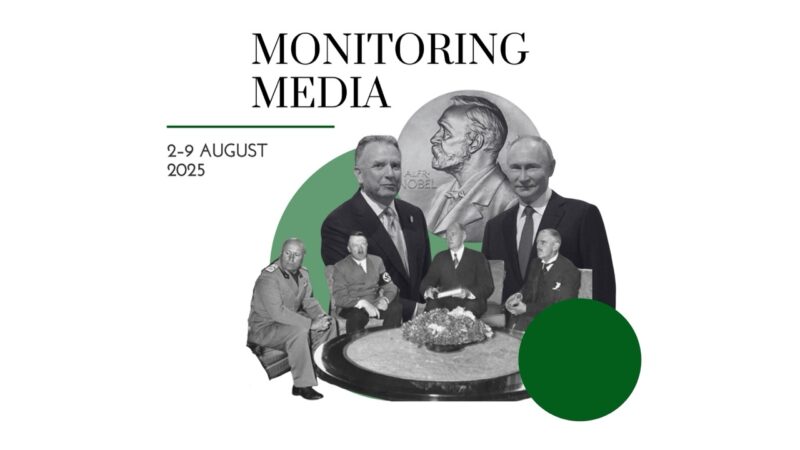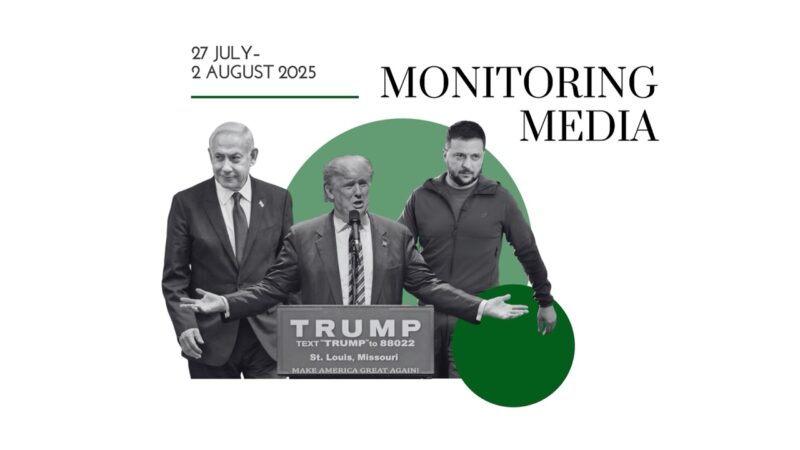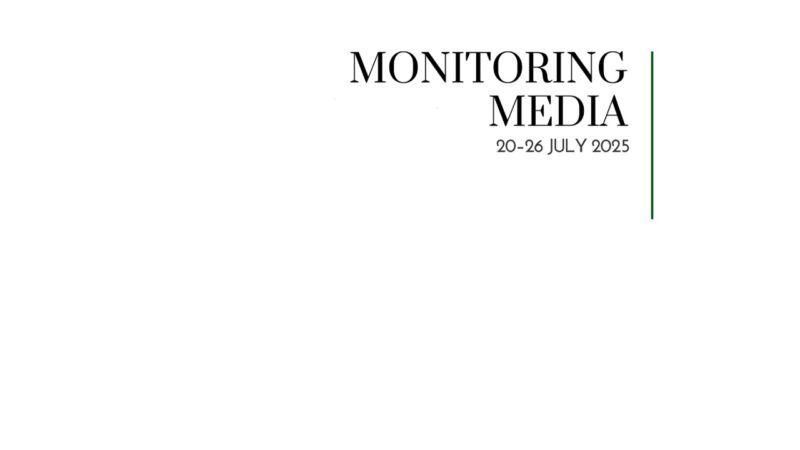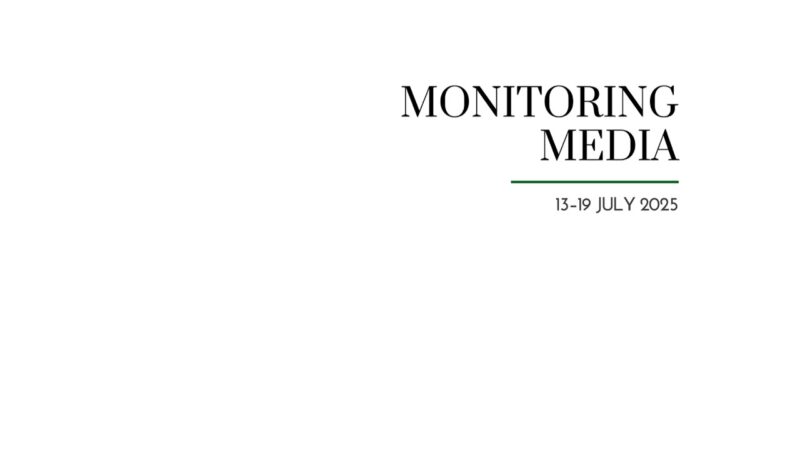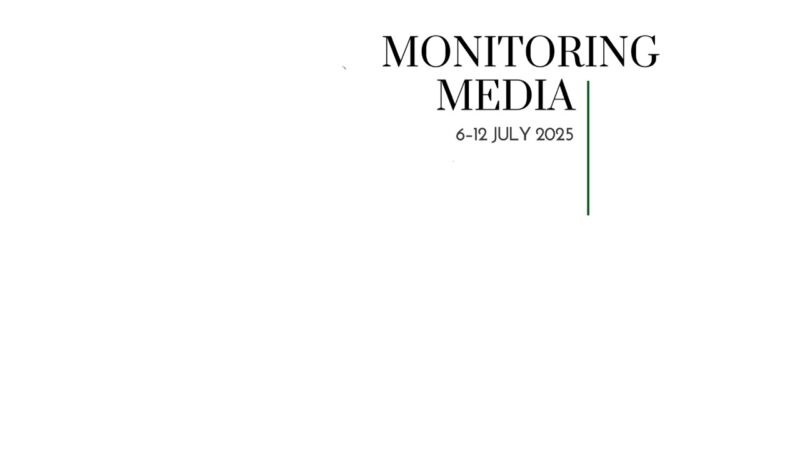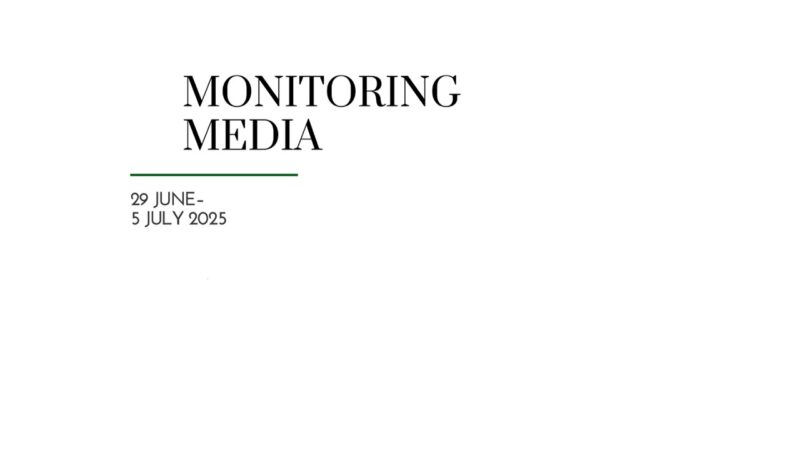The Arctic could become Kremlin’s next front
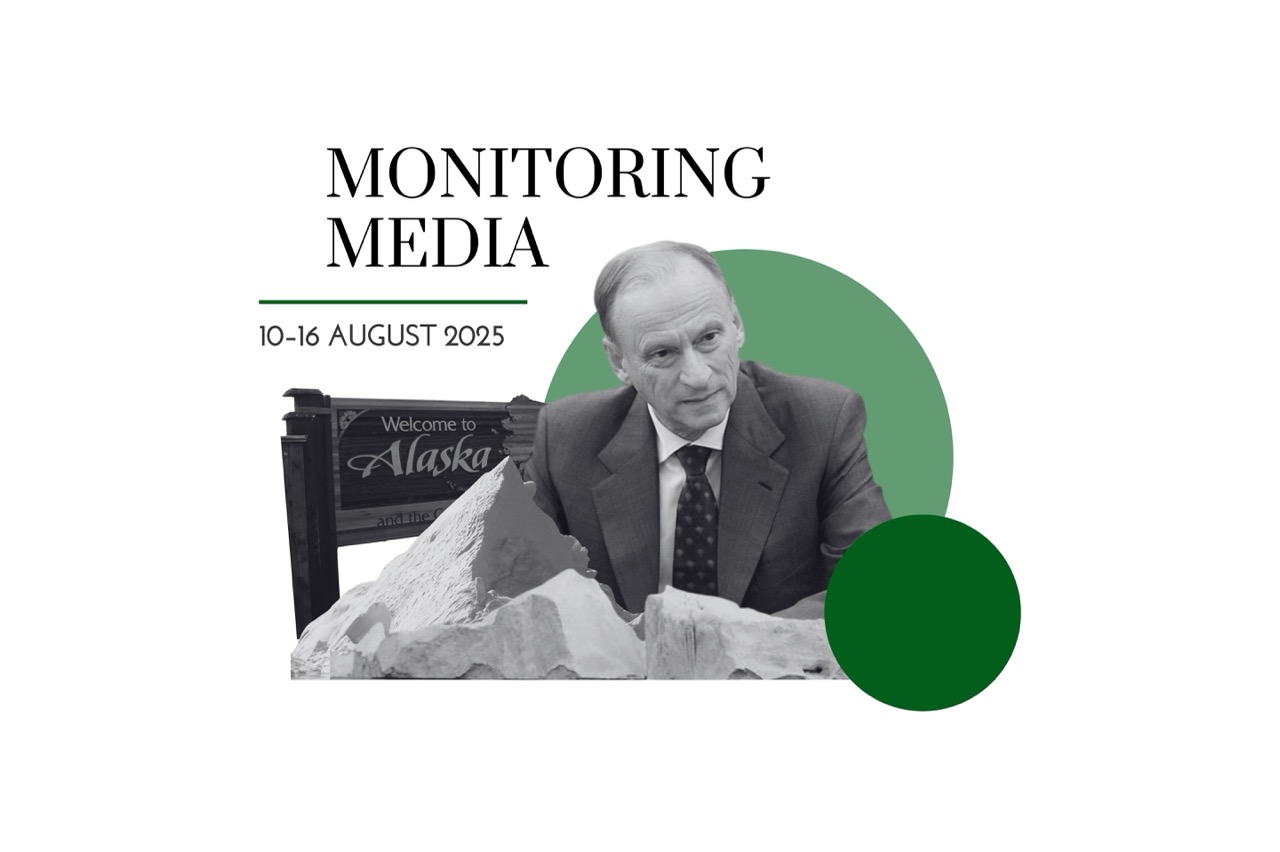
CIUS weekly report on North American media coverage of Ukrainian affairs, 10–16 August 2025
Six publications (National Interest, Foreign Policy, Foreign Affairs, The Economist, The Globe and Mail, and Politico) were selected to prepare this report on how Ukraine has been portrayed in the North American press during the past week. The sample was compiled based on their impact on public opinion as well as on their professional reputation, popularity among the readership, and topical relevance. These publications represent centrist viewpoints on the political spectrum.
This MMS report covers only the most-read and relevant articles about Ukraine, as ranked by the respective North American publications themselves in the past week. Its scope covers promoted articles on home pages and articles from special sections on Ukraine, with the hashtag #Ukraine, from the paper editions of the publications, and about Ukraine from opinion columns and editorials.
Featured topics
- The world and Ukraine: the era of automated warfare has begun; Trump-Putin summit raises fears of Western disunity, concessions on Ukraine.
- Russia at war: Russian gas will not return to Europe; Arctic could become the Kremlin’s next front.
MMS summaries
Russian gas will not return to Europe. Andreas Goldthau and Adnan Vatansever (National Interest) ask whether Russian gas will return to Europe after the end of the Russo-Ukrainian war. In their opinion, this is unlikely, as the change in Europe’s political economy over the past three years has been to Moscow’s detriment. Russia has gone from being a dominant player in the market to a marginal supplier of energy resources to Europe, “delivering a mere 51.6 bcm in 2024, of which 31.6 bcm was pipeline gas.” The EU has set a political goal of phasing out Russian gas by 2027, but some want to bring it back. The main obstacle to the return of Russian gas to Europe would be the political economy of EU gas markets. Since Russia’s full-scale invasion of Ukraine, three key things have changed: “sunk costs, incumbency, and policy paradigms.” First, the new infrastructure began to generate new sunk costs: “In 2023, Norway had taken the spot of being Europe’s top supplier, whereas liquefied natural gas (LNG) ended up replacing Gazprom’s molecules, mostly in the shape of gas shipped from the United States. Within record time, and to the surprise of many observers, the geography of the gas trade shifted from east to west.” Second, the return of Russian gas could harm significant corporate interests: “The crisis brought in new gas players challenging incumbent ones, particularly if their business was built on Russian gas.” Third, policy paradigms turned from blue to green: “Europe’s decarbonization targets have become ever more ambitious in the past two decades, and the energy crisis triggered by Russia’s invasion of Ukraine has accelerated this trajectory. ‘Gas as a bridge fuel’ for the energy transition has lost most of its appeal.” According to Goldthau and Vatansever, the dynamics unfolding in the new political economy of European gas are hard to do away with: “The longer they last, the more path dependencies will become sticky, and for Russia, the more returning to the status quo ante will get difficult.”
The Arctic could become the Kremlin’s next front. Mikhail Komin (Economist) argues that Moscow’s aggressive behaviour in the Arctic is fuelled by its lack of confidence in its own strength. Russia considers its “nuclear triad” of land-, sea- and air-launched weapons as a long-term guarantee of its sovereignty. However, Kyiv’s successful military actions, in particular Operation “Spider’s Web,” are undermining the Kremlin’s confidence in this. Russia’s Arctic strategy has long been shaped by its fear of losing military superiority, as melting ice undermines the country’s natural defences—and NATO’s presence expands, especially after Finland and Sweden join the alliance in 2023 and 2024, respectively. Second are economic reasons: “Russia remains eager to access Western technologies to extract hard-to-reach Arctic hydrocarbons, and to re-enter Western markets.” Resolving any of these issues would require at least a partial easing of sanctions. Moscow considers the Arctic a strategic priority, second only to Ukraine. This creates three main risks for all Arctic countries in the next decade, but especially for Europe, which remains dependent on US military support in the region. First, if a direct military conflict between Russia and Europe does occur—and such a scenario is not entirely impossible—it will flare up in the Arctic region: “The more probable flashpoints are in the Barents or Baltic Seas, putting the Nordic and Baltic states on the front line of any future aggression.” Second, the growing influence on Arctic policy of Nikolai Patrushev, former head of the FSB (Russia’s domestic security service), and long-time secretary of the Russian Security Council: “Since taking over the Maritime Board in mid-2024, Mr Patrushev, a hardliner and key architect of the Kremlin’s anti-Western ideology, has pushed for more aggressive hybrid operations. On his watch, these campaigns are likely to intensify across northern Europe, aiming to test NATO’s red lines and to expose perceived vulnerabilities in Western societies.” Third, the risk for Europe lies in the real possibility that Russia will be able to exploit the White House’s ambitions in the Arctic to its own advantage. According to Komin, “To entice the Trump administration, Mr Putin may offer the promise of a ‘grand bargain’ in the region—an informal understanding to divide spheres of influence. Two great powers, each satisfying its own imperial instinct in the Arctic, while sidelining other players and international law. Such a scenario would leave Europe trapped between two assertive poles and unable to mount an effective response.”
The era of automated warfare has begun. Eric Schmidt and Greg Grant (Foreign Affairs) argue that artificial intelligence will be the key to victory in the Russo-Ukrainian war. Russia’s full-scale invasion of Ukraine in 2022 began as a classic 20th-century war, with tanks, armoured personnel carriers, and artillery dominating the battlefield, and infantry on both sides dug in their trenches. However, starting in 2023, drones became a key weapon that determined the course of the war: “What began as a war with drones has become a war of drones.” According to the authors, today the power and resilience of a given military unit are determined by the number of qualified drone operators and its ability to deploy drones at scale: “Ukrainian drone strikes now account for 90 percent of destroyed Russian tanks and armored vehicles and 80 percent of Russian casualties.” Drones have also allowed each side to attack targets located far behind the front lines without having air superiority over the battlefield. The speed of technological adaptation and iteration—or innovation power—is a new measure of combat strength: “The key to adaptation is the lightning-fast feedback loop from operator to engineer.” According to Schmidt and Grant, “It is in the interest of the West, and of the United States in particular, to support the Ukrainian people in their dogged determination to win that fight—not only for Ukraine’s sake but also for its own, so it can learn to reckon with this new reality of war.”
Trump-Putin Alaska summit tests Ukraine’s future. Tony Keller (Globe and Mail) notes that Donald Trump and Vladimir Putin’s Alaska summit on 15 August could be seen as a moment of leverage for Washington but also a test of Trump’s reliability. Keller argues that Trump “holds stronger cards than any previous American President sitting down with a Soviet or Russian leader,” citing Russia’s isolation, economic weakness, and battlefield losses. Add to that Ukraine’s willingness to accept an unconditional cease-fire, combined with frozen Russian assets and Western sanctions, presents what could be an ideal environment to pressure Putin into ending the war. The ultimate outcome might not be what Ukrainian government hopes for, however: “An independent Ukraine in control of 80 per cent of its territory, with recognition that the remaining 20 per cent is de jure Ukrainian even if under occupation, is a major victory [for Moscow].” Yet, if Trump wields these tools effectively, the summit could set the stage for freezing the war in a way that secures Ukraine’s independence and strengthens the Western alliance. However, the author warns that the greatest uncertainty lies with Trump himself. His instincts, reinforced by the MAGA wing of his administration, have been to treat Ukraine less as a strategic ally and more as a costly burden. Earlier this year, Trump publicly humiliated Zelensky at the White House and pursued unusual arrangements such as a revenue-sharing deal tied to Ukraine’s mineral wealth. These moves signal to Putin that patience and charm could yield concessions without real compromise. As NATO Secretary-General Mark Rutte put it, the Alaska meeting is “about testing Putin,” but the real test may be whether Trump responds to Russian intransigence by doubling down on support for Kyiv—or by walking away from it.
Putin’s adviser Ushakov reflects Russia’s core stance on Ukraine—denial of independence. Toby T. Gati (Politico) recalls his encounters with Yuri Ushakov, Putin’s longtime adviser and “America guru,” whose rhetoric over the years illustrates both the depth of Russia’s diplomatic preparation and the rigidity of its worldview heading into the Alaska summit. Ushakov’s career arc—from a Washington-based ambassador eager to attract US business investment to a Kremlin insider echoing increasingly hostile narratives about the West—reflects Russia’s overall turn toward confrontation. By 2013, the author notes, Ushakov “already sounded very much like other Russian (and Soviet) bureaucrats: […] tended to blame the United States for every problem in the world.” Today, his role is not to debate Putin’s policy but to defend and package it, reinforcing the Kremlin’s line that Ukraine has no right to exist independently and that NATO membership is permanently off the table. “Like his boss and the rest of his team, Ushakov views a strong, independent Ukraine as a threat to Russia… Simply put, in their minds, Ukraine ‘belongs’ to Russia. It has no right to exist as an independent state for reasons clearly spelled out in new textbooks for all Russian high school students, on Russian propaganda TV stations, and in background papers undoubtedly prepared for the Alaska Summit.” Gati notes that Ushakov and Putin’s team have formidable institutional memory and negotiating experience. Collectively, they “have almost 100 years of combined experience in dealing with the U.S.,” a striking contrast to Trump’s delegation, described as inexperienced and preoccupied with “real estate” notions of territorial swaps. The Russians know how to adapt tactics—whether flattery, stonewalling, or threats—to exploit Trump’s unpredictability, asking themselves “which Trump will show up in Alaska: the one who calls Putin a friend and a genius or the one who agreed he was a ‘killer.’” This imbalance not only risks undermining Ukraine’s position at the table but also highlights the American administration’s lack of strategic coherence compared to the Kremlin’s consistency. At stake is not merely territory but the survival of Ukraine as a sovereign state. Putin’s advisers are united around an uncompromising objective: “The end game is for Putin and his team to press for an outcome that furthers their main goals: a sharp reduction of western influence in Ukraine, the fracturing of the western alliance and the eventual realization of Putin’s vision for the restoration of the Russian empire.” The author stresses that “what really matters, sadly, is the all-but unbridgeable gap between Ukraine’s legitimate desire for independence and security and Russia’s determination to win at the negotiating table what it has been unable to achieve on the battlefield.”
Trump-Putin summit raises fears of Western disunity, concessions on Ukraine. Campbell Clark (Globe and Mail) frames the Trump-Putin summit in Alaska as a stark symbol of the erosion of Western unity and the sidelining of Ukraine’s agency. The author argues that what was once a cohesive bloc of “like-minded” democracies has fractured, with Trump now preferring to treat Putin as his principal counterpart instead. Clark states that “the two will discuss the fate of Ukraine, which neither of them really see as a country with agency of its own.” Trump’s posture has consistently leaned toward Moscow’s framing of the war, whether telling Zelensky in February he had “no cards” in shaping the war’s end or lamenting at the G7 that Russia was “insulted” by expulsion from the G8. This tendency to indulge Russian grievances, combined with his eagerness to claim credit for ending the war, raises fears that the US president could bargain away Ukrainian territory or security guarantees. European leaders are scrambling to constrain Trump’s impulses, but with limited leverage. German Chancellor Friedrich Merz convened a virtual meeting with Trump, Zelensky, and European allies to dissuade him from concessions, while Polish Prime Minister Donald Tusk openly warned of the danger that Trump could agree to reduce NATO troops in Eastern Europe. “That’s why it is so important that we build such a strong and united group of states, both in relation to Russia, but also in relation to other allies, like the United States,” Tusk said. These interventions reflect a deep anxiety that Trump’s pursuit of a ceasefire, and his unusual willingness to treat Putin as an equal, could undermine NATO cohesion and Ukraine’s sovereignty. Clark cautions that the core risk is that Trump “usually seems to see Mr. Putin as like-minded,” leaving Ukraine and its allies to hope he resists accepting Moscow’s narrative that the parts of Ukraine currently occupied by Russian troops have never really been Ukrainian.
